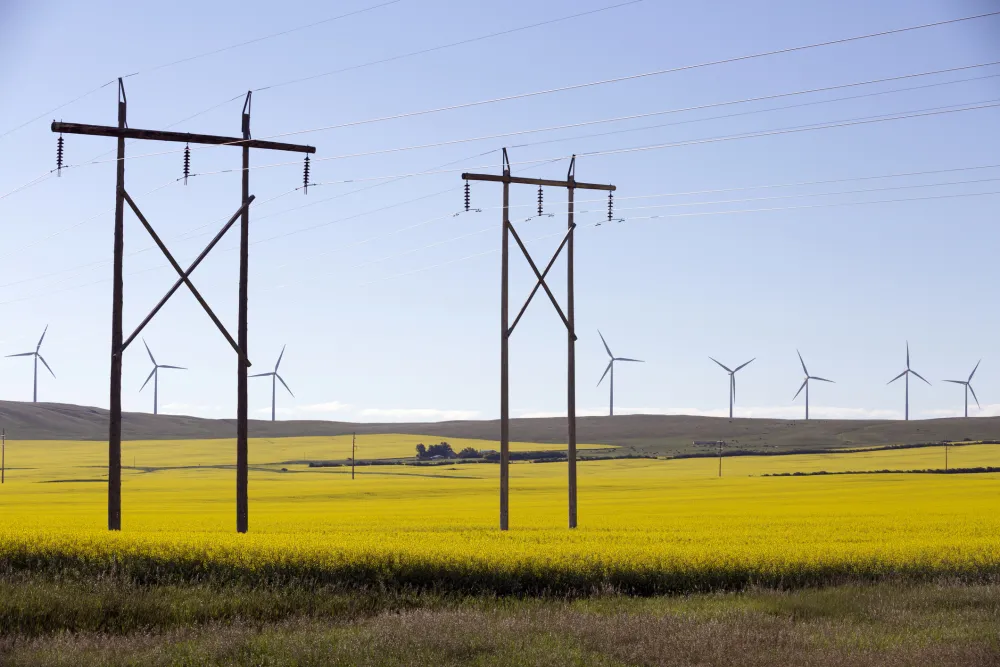As Canada strives to meet its decarbonization targets, regulatory authorities can play a pivotal role in shaping the direction and pace of the energy transition. Each province and territory’s electricity system faces its own unique challenges and opportunities. However, across all of Canada’s electricity systems, outdated approaches to regulation remain a barrier to achieving a net-zero electricity grid. These barriers can be organized into six categories.
Limited interjurisdictional coordination towards electricity system innovation
A lack of provincial and territorial coordination towards electricity systems complicates grid decarbonization. While a collaborative regulatory body could impact the ability of provinces and territories to tailor their grid to their regional strengths and needs, it could also bring considerable benefits to Canada’s electricity system. The Federal Energy Regulatory Commission in the United States and the National Electricity Market in Australia present two pathways to achieving reliability and affordability goals through regional and national coordination.
Lack of strategic direction and governance on the path to net-zero
A lack of clarity on how to achieve decarbonization goals, who has the authority to pursue them, how alternative options will be evaluated, and what the ideal electricity system would look like creates technical uncertainties, making efficient system design a challenge. Electricity regulators in most jurisdictions lack integrated, net-zero-aligned electricity plans, hindering collaboration and exacerbating uncertainty. Clear mandates with net-zero policy objectives are needed to enable regulators to consider broader factors beyond economics in their decision-making processes.
Slow and burdensome regulatory processes
Regulatory processes are deterministic by nature, and thus inadequately designed to manage uncertainty or keep pace with system changes and the urgency of the clean energy transition. In addition to causing delays, regulatory processes can be difficult to navigate for stakeholders operating under resource constraints. Because of the slow pace at which changes can be implemented, continuing the regulatory cycle at its current pace will provide limited opportunities to guide utilities toward achieving Canada’s net-zero grid target.
Complexities associated with adding new technologies to the grid
Integrating new technologies presents both opportunities and challenges. Under current market regulatory structures, utilities may find integrating new technologies such as distributed energy resources (DERs) and non-wires alternatives (NWAs) less economically attractive than pursuing more conventional solutions for meeting grid needs. Innovative valuation methodologies, support for new technologies, and implementation strategies that balance the needs of all players in the system are needed to ensure fair competition.
Information asymmetry between electricity system stakeholders
Siloed information-gathering between governments and regulators exacerbates risk and uncertainty on decision-making about new technologies. Challenges with information asymmetry also impact rate applications. Details on proposed utility costs can be difficult to obtain, especially if stakeholders do not have access to modelling tools and information. Enhanced collaboration and information-sharing between governments, regulators, system operators, utilities, and consumer advocates is needed to ensure transparency and to support government and regulator education on emerging technologies.
Concerns surrounding the affordability of a decarbonized electricity system
While the exact costs of grid modernization and decarbonization remain uncertain, it is evident that substantial capital investments will be necessary to update the grid. New frameworks are needed to ensure that utilities can be compensated for deploying innovative technologies and approaches to meet affordability and reliability targets while adhering to the regulatory construct of intergenerational equality, under which ratepayers should not have to subsidize electricity costs for past or future ratepayers. The clean energy transition will require investments that make electricity costs fluctuate in the short term, but will lead to a lower-cost clean grid in the long run.
 There are several options available to reshape the electricity system, and careful consideration is required for effecting positive change. To accelerate national achievement of a net-zero electricity grid, each province and territory will need to pursue the regulatory reform opportunities that are most effective for their own system. By addressing barriers to innovation and fostering collaboration, regulators can drive the transition to a clean energy future for all Canadians.
There are several options available to reshape the electricity system, and careful consideration is required for effecting positive change. To accelerate national achievement of a net-zero electricity grid, each province and territory will need to pursue the regulatory reform opportunities that are most effective for their own system. By addressing barriers to innovation and fostering collaboration, regulators can drive the transition to a clean energy future for all Canadians.
This introductory report is the first in a series that aims to uncover the regulatory bottlenecks that inhibit grid modernization and decarbonization in Canada and to recommend potential solutions to address these barriers. Subsequent reports will focus on challenges and solutions specific to the electricity systems in Ontario, Alberta, and remote and Indigenous communities in British Columbia and the territories. Understanding the unique circumstances in each of these focus areas will reveal insights and opportunities for regulatory reform that can be applied across the country.









